WPG Home | Lab Testing | Field Testing | Field Sites | Pilot Plant | Members | Wood Science Links
Have questions? Contact us to discuss testing options.
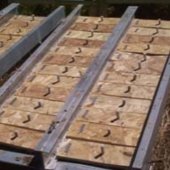
Lap Joint Exposure
AWPA E16
The lap joint exposure test simulates the use of wood and wood based materials in exterior construction that may be exposed to the weather, but does not contact the ground. Some examples include decking, railings, and wall sheathing. Lap joint specimens are exposed horizontally in above-ground racks and inspected at specified intervals for decay and insect damage. Lap joint specimens consist of two overlapping parts joined together with a nylon bolt-spring-nut assembly to accommodate thickness swell. For inspection of the overlapping joint the two halves are pulled apart.
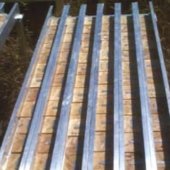
Depletion Rate
MTU Test Method
Depletion rate testing evaluates the persistence of the wood preservative in severe above-ground moisture exposures. Depletion rate specimens are positioned horizontally to maximize the severity of the test. At specified intervals a number of specimens are removed from the field and analyzed for preservative content to determine the rate of preservative depletion.
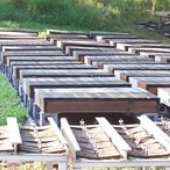
Termite Exposure: Above Ground
MTU Test Method
The MTU Termite Exposure Test Sites located near Kailua, Hawaii and New Orleans, Louisiana provide a severe challenge because of very high Coptotermes formosanus populations. The termite exposure test evaluates the susceptibility of the treated wood, or wood composite to termite attack under conditions that may be damp, but where some protection from the weather is provided. Sill plates, framing, timbers and interior beams are examples of common construction areas under these conditions. For the above ground tests, wood, or wood composite specimens are arranged on a low acrylic grid platform so that they are in contact with aspen feeder stakes, which in turn contact aspen bait stakes. The aspen bait stakes fit inside the acrylic grid to rest on a plywood base, which rests on the ground. The plywood acts as an additional food source to draw termites to the area. The specimens are examined and rated for termite damage at specified time intervals. The arranged termite specimens are covered with a polypropylene box top to protect them from weather.
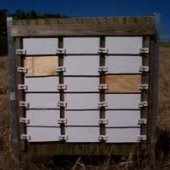
Siding Exposure
MTU Test Method
The siding exposure test evaluates decay, insect and weather resistance of coated composite panels under the most severe above-ground conditions. Siding specimens are mounted unto an exposure rack, which is positioned either vertically, or at a 45° angle to the ground. North or south facing orientation may also be specified. Maximum weathering is achieved using the 45° angle, while the 90° angle simulates typical orientation. As siding specimens are removed from the rack due to decay, or for analysis, they are replaced with plain plywood.
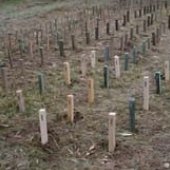
Field Decay and Depletion Rate Stakes
AWPA E7-Standard Method Of Evaluating Wood Preservatives By Field Tests With Stakes
Field decay stake testing is the most comprehensive means for evaluating the efficacy of wood preservatives in wood under severe, or very severe ground contact conditions. Wood foundations, utility poles, building poles, and land or fresh water pilings may undergo similar exposures. Treated (and untreated) wood stakes are inserted half-way into the ground. At specified time intervals the stakes are removed and rated for severity of decay and insect damage. They are placed back into the ground after each rating until light bending pressure causes them to fail. Stake depletion rate testing evaluates the persistence of the wood preservative while under ground contact. At specified intervals a number of specimens are removed from the field and analyzed to determine the rate of preservative depletion.
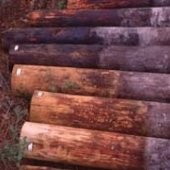
Posts
AWPA E8-Standard Methods For Field Tests With Posts
Field decay post testing is done in a similar method as with stakes, in a variety of field settings at specified time intervals to determine decay and insect damage. Samples may be collected with an increment borer.